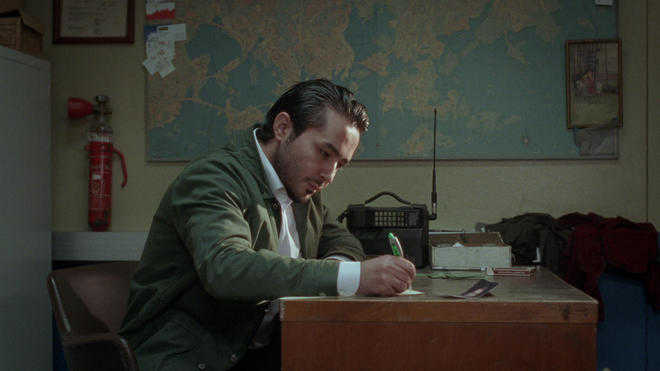
The Other Side of Hope by Aki Kaurismaki (below)
Shardul Bhardwaj
Roger Ebert, American film critic, wrote in his review for A Man that “Aki Kaurismaki is an acquired taste — hard to acquire”. This may be considered a rather curious comment to make about the Finnish filmmaker who is known for his comic portrayal of scenes in his films, especially in a market set up where ‘comedy films’ are perceived as better gambles than so-called ‘serious films’. However, Ebert was right: in a world populated with stereotypes, gags and one-liners in comedy films, Kaurismaki’s deadpan portrayal of black humour involving the ‘losers’ of the society might seem challenging to watch.
Kaurismaki’s understanding of the marginals seems to drive him to make almost fairytale-like films where he grants poetic elevation to his characters. The man (Marrku Peltola) from The Man Without A Past (2002), who at the beginning of the film loses his memory, seems to find a new paradise among the underprivileged living in shipping containers. Upon meeting his wife, she expresses that he was the first love of her life. The man responds by saying, “that’s beautifully said.” His first wife has started living with another man and both their lives had changed in different ways since the man’s loss of memory. The above exchange points towards acerbic humour that is ever-present in Kaurismaki’s 18 feature length- films.
Walking out on a road in any Indian city, one may find a scene from a Kaurismaki film unfold; his humour only really found upon looking carefully. His latest film The Other Side of Hope (2017) opens with a Syrian refugee emerging out of a large coal mountain on a ship post which he is shown walking on the streets of Helsinki. We see the refugee blackened by the coal, walking with the ordered Helsinki crossroads in the background. In Jim Jarmusch’s words, this moment and many more moments in Kaurismaki’s films are “are sad enough to make you laugh and funny enough to make you cry”.
Kaurismaki finds humour within the pathetic and the horrific. Kaurismaki Kaurismaki’s cinema is essentially about the strength and hope within human beings to be able to find community and solace in the most daunting situations. Although some of his films like The Match Factory Girl (1990) have been described by many as depressing, it would be a mistake to ignore the hope he ignites in the most hopeless situations.
Aki Kaurismaki is, perhaps, one of the rare directors in today’s times who can be called an auteur. He writes, directs and produces his films, which gives him enormous creative control over his work. He, in his usual gruff humour, claims to refuse to move the camera much because of his hangovers during shooting schedules. He also forbids his actors from “acting” by not letting them use their hands and eyebrows.
Aki Kaurismaki’s bare settings for his scenes and deadpan acting by actors is complemented by rich characterisation and storytelling. Indeed, he is one of the most original thinkers in the visual medium of our times.



























